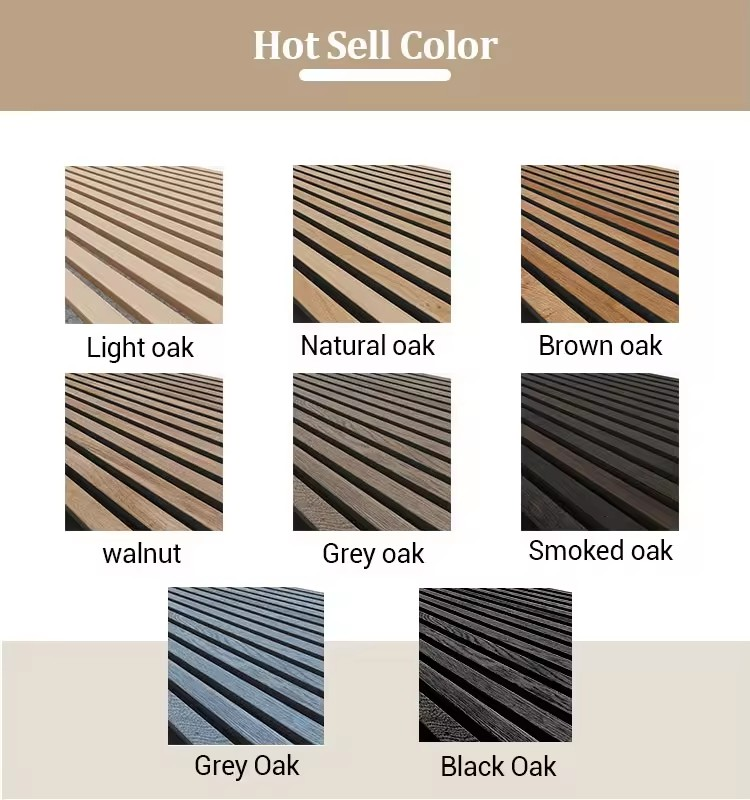The Role of Wood in Acoustic Panels A Comprehensive Overview
Acoustic panels are essential for optimizing sound quality in various environments, from recording studios and concert halls to home theaters and offices. While various materials can be employed to achieve sound absorption and diffusion, wood has emerged as a favored choice among designers and engineers for its aesthetic appeal, versatility, and acoustic properties. In this article, we will explore the reasons why wood is an exceptional material for acoustic panels and its benefits in enhancing sound performance.
Acoustic Properties of Wood
Wood is a naturally resonant material, possessing inherent qualities that can contribute positively to sound management. It excels in both sound absorption and diffusion, shaping the acoustic environment in various settings. Unlike rigid surfaces that reflect sound waves, wood can absorb specific frequencies while allowing others to pass through, creating a balanced auditory experience. This is particularly important in spaces where clarity of speech and musicality is essential.
The cellular structure of wood plays a crucial role in its acoustic performance. The porous nature of wood allows it to trap sound waves, thereby reducing echo and reverberation. Different species of wood exhibit varying densities and grain patterns, which affect their sound absorption capabilities. For instance, softer woods, such as pine, may absorb higher frequencies better than denser hardwoods like oak, which can provide more diffusion for mid-range frequencies.
Aesthetic Appeal
One of the standout features of wood is its natural beauty. Wood finishes bring warmth, texture, and elegance to any space, making it a popular choice for architects and interior designers. Acoustic panels made from wood can be custom-designed to complement existing decor, blend harmoniously with other materials, or serve as a striking design element.
The versatility of wood allows for different styles, from rustic reclaimed wood panels to sleek, modern designs. The ability to stain, paint, or leave wood in its natural state provides endless possibilities for customization, enabling spaces to reflect personal style or brand identity.
wood for acoustic panels

Sustainability and Eco-Friendliness
In an era increasingly focused on sustainability, wood stands out as an environmentally friendly choice for acoustic panels. When sourced from responsibly managed forests, wood is a renewable resource that has a lower carbon footprint compared to many synthetic materials. Many manufacturers offer products made from reclaimed wood, further reducing environmental impact while adding character and history to the panels.
Moreover, wood is biodegradable, meaning at the end of its life cycle, it can decompose naturally without contributing to landfill waste. By choosing wood for acoustic panels, individuals and organizations can align their design choices with eco-friendly practices, contributing to a greener future.
Installation and Maintenance
Another benefit of wood acoustic panels is their ease of installation and maintenance. Many wood panels come with pre-finished surfaces, making them straightforward to install in various settings. Whether in a commercial space or a private residence, these panels can be mounted directly on walls or ceilings, adding both aesthetic and functional value with minimal disruption.
Maintaining wood acoustic panels typically involves simple cleaning practices to prevent dust accumulation. Depending on the finish, occasional refinishing may be required to maintain their appearance, but this can also be an opportunity to refresh the space with a new stain or color.
Conclusion
The integration of wood into acoustic panels offers a superior solution for enhancing sound quality in a variety of environments. With exceptional acoustic properties, aesthetic versatility, sustainability, and ease of maintenance, wood remains a top choice for architects, designers, and sound engineers alike. Whether optimizing a recording studio or enhancing a home theater, wood acoustic panels provide a beautiful and effective way to create an acoustically pleasing environment that resonates with style and function.
